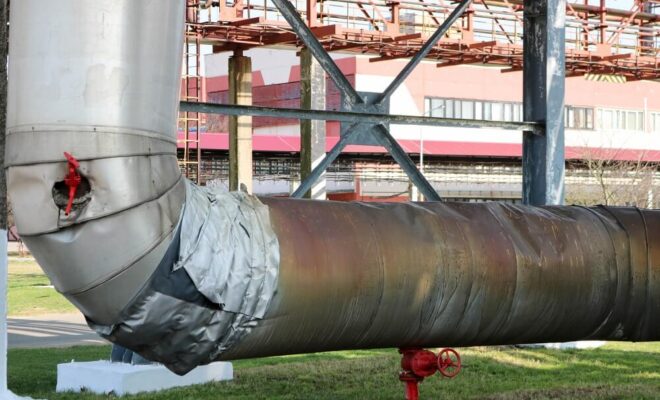Corrosion Under Insulation: How It Starts And How To Prevent It

Corrosion is already a serious issue across several industries. It’s a chemical reaction that causes metal surfaces to get damaged over time. Its trickier form — the Corrosion Under Insulation (CUI) — is more challenging to deal with.
Regular insulation materials can’t prevent moisture from coming into contact with the very surface they protect. As a result, moisture can get trapped, create a corrosion-promoting environment, and eventually wreak havoc on the substrate. If left unchecked, CUI can lead to structural damage, which can shorten the usable life of the substrate or the main machinery it’s a part of.
What Causes Corrosion Under Insulation?
Industries that rely on pipework and vessels use insulation solutions to promote energy efficiency while creating a safe environment for their workers. However, conventional insulating products can’t prevent water or moisture ingress. The presence of water and moisture can be attributed to:
Poor fabrication of/mechanical damage to joints and protective cladding
Leakage/spillage of liquid from the pipework/vessel or nearby components
Condensation caused by fluctuating temperature levels
There are also other factors that can increase the risk of CUI. For instance, If a piece of equipment is located and operated below the water dew point, then it has a higher tendency to experience CUI. The same is true in a marine environment or a place with higher annual rainfall.
The presence of contaminants can also aggravate the situation. If there are ions such as sulfides and chlorides, your substrates will likely corrode if there’s no protective barrier. Take note that some insulation materials contain these very ions. In other instances, they are present in external sources, such as decomposing vegetation or acid rain.
How Do You Prevent It From Damaging Your Substrates?
What makes CUI more problematic is that it typically goes undetected. Once its signs come to the surface, it’s often too late, and you’ll need to spend a substantial amount of money to fix it.
Regular inspection is imperative if you want to detect CUI in your equipment. Part of your maintenance plan is thoroughly checking for possible signs of ongoing CUI, which include the bulging of insulation materials and the presence of rust stains, among others.
You can make things more cost-effective by preventing them from happening in the first place. One of the things you can do is create a barrier designed to combat challenges such as CUI.
Today, manufacturers have engineered coatings that won’t trap moisture and promote a corrosion-inducing environment for a wide array of substrates. Experts recommend a robust protective system includes a primer and a thermal insulation coating. One advantage of having a primer apart from the insulation coating is that it provides sturdy adhesion and an added layer of protection to substrates subject to higher temperature applications.
You should also invest in adequate protective jacketing to keep water out of your insulation system — no matter what it is.
For long-term protection against corrosion under insulation, you should also implement an insulation system maintenance plan. To lower costs, make sure to choose insulation solutions that are easy to maintain.


